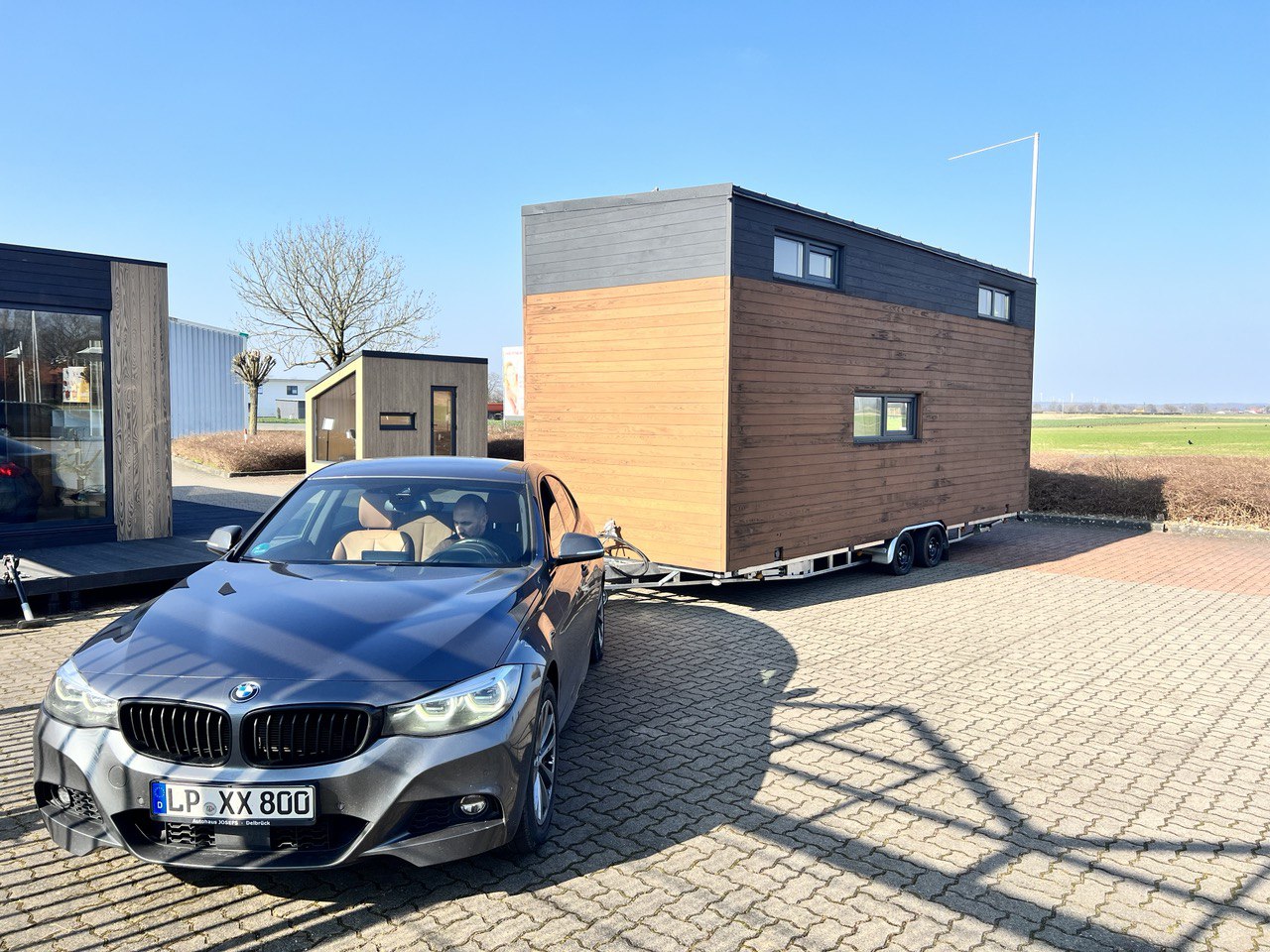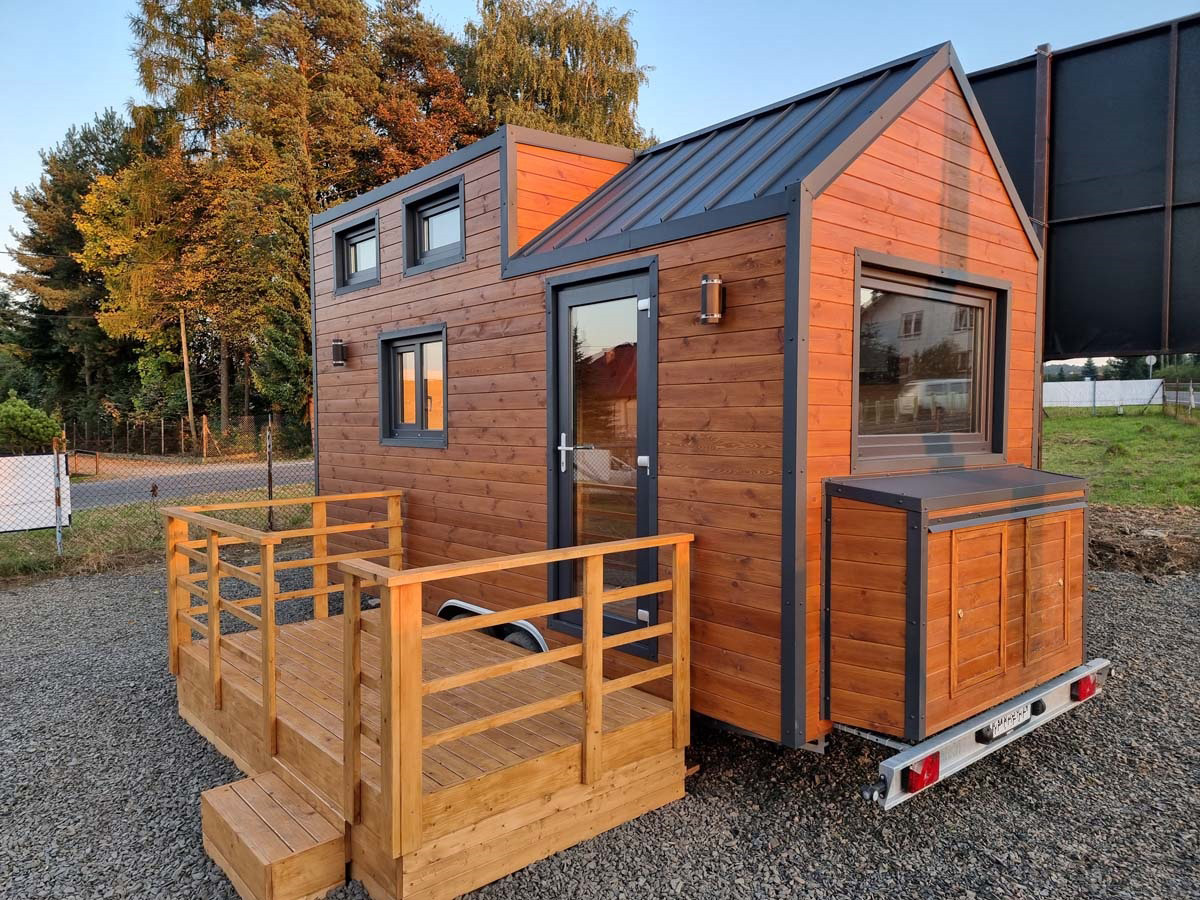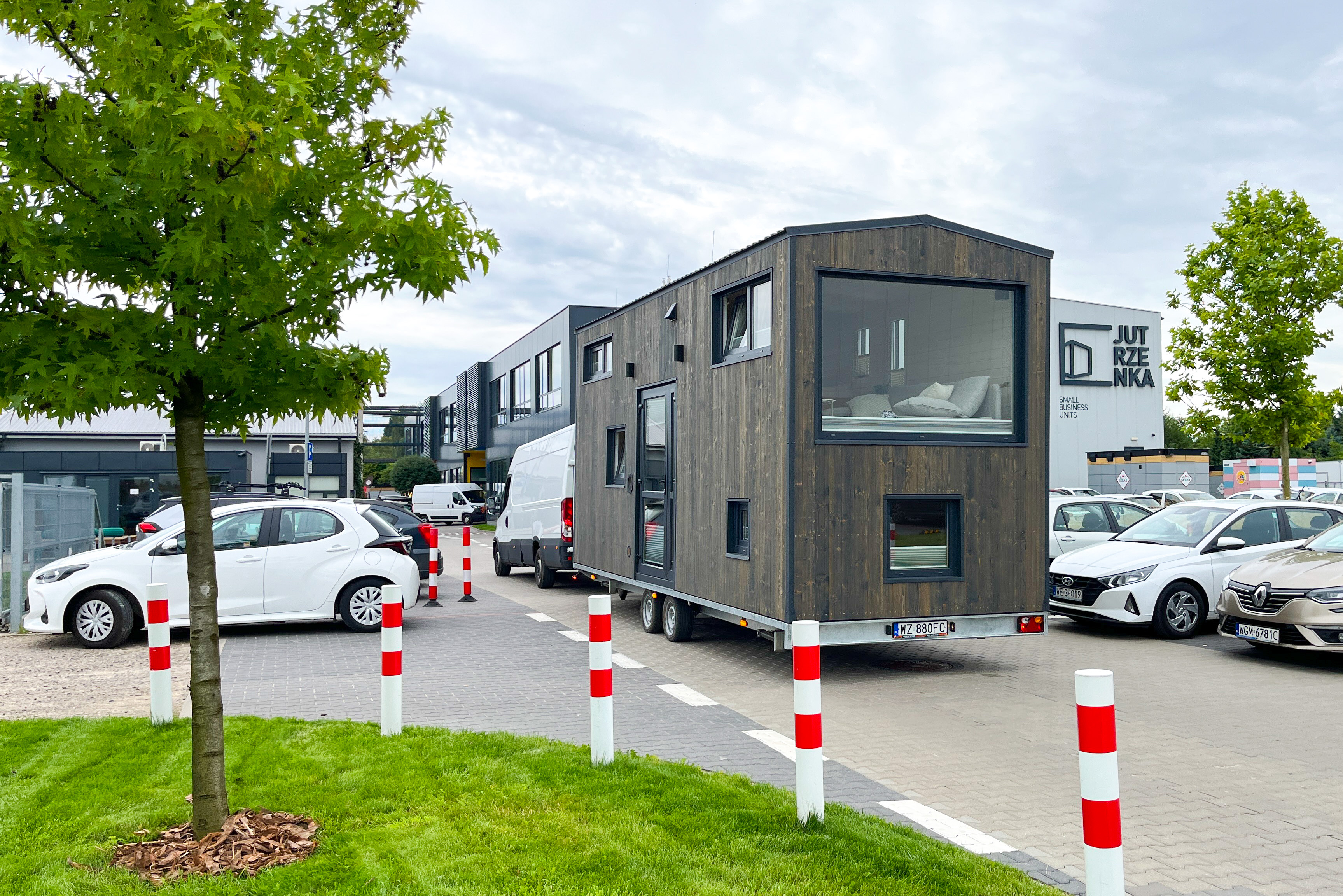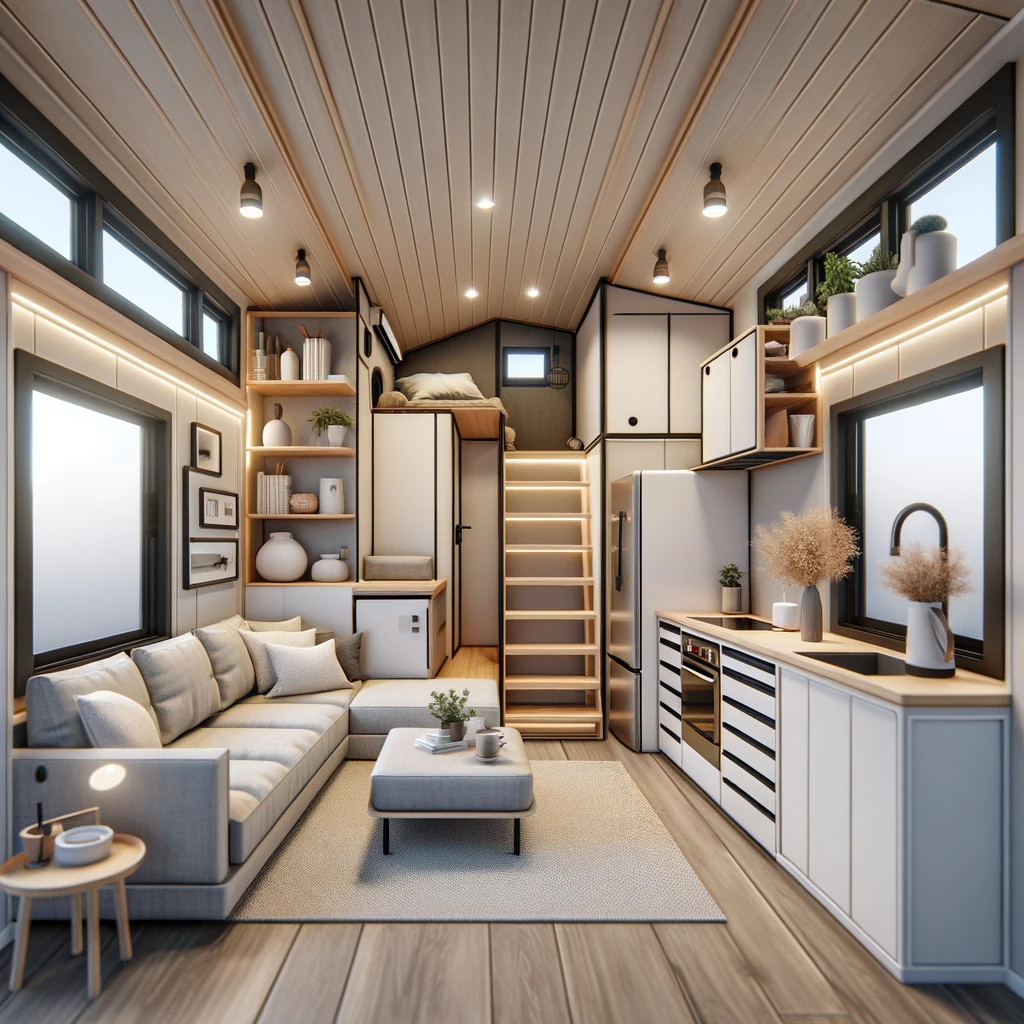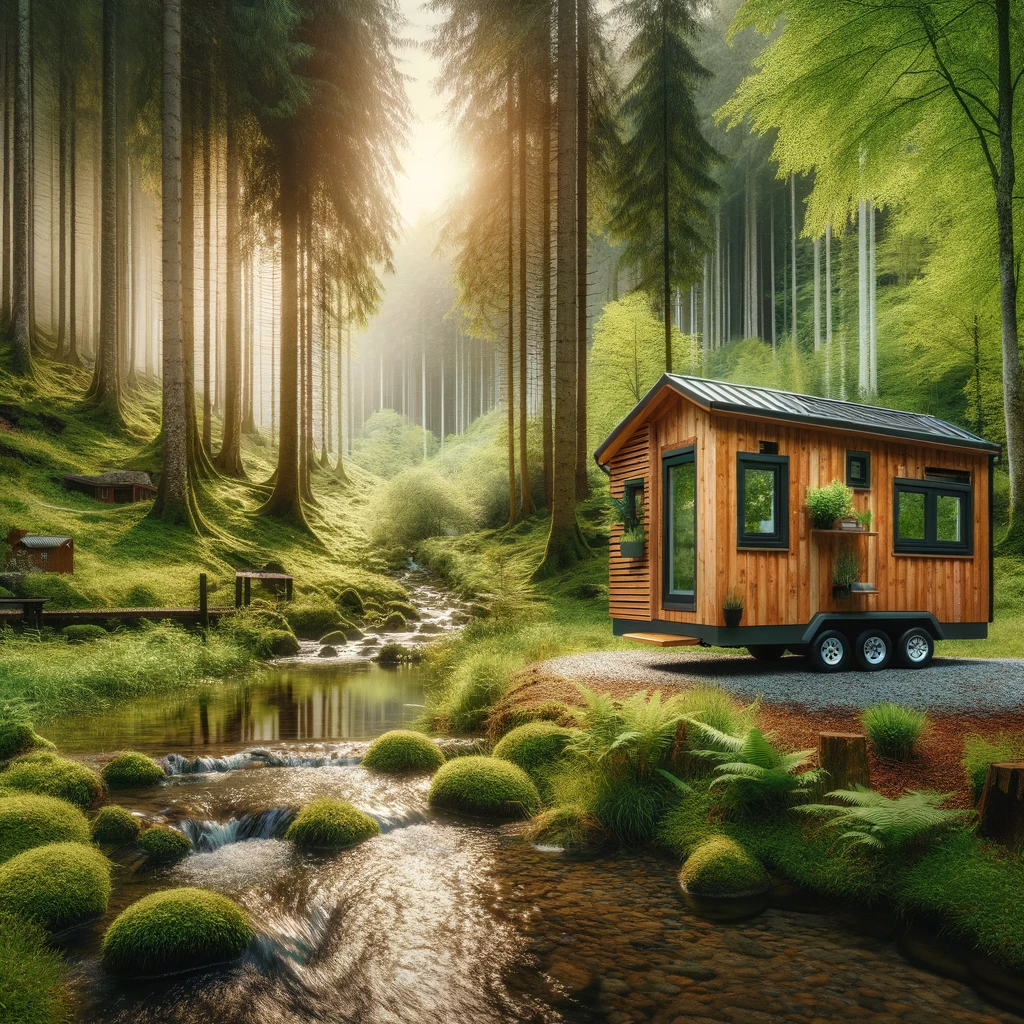17/12/2023
Tiny House health and wellness: a healthy life in a small space
Introduction to healthy living in a Tiny House
Living in a Tiny House not only offers the opportunity for a simple and environmentally friendly lifestyle but also promotes a healthier way of living. These compact living spaces require thoughtful design and conscious life choices that can positively impact physical and mental health.
The limited space fosters creativity and mindfulness, leading to a more conscious and contented lifestyle. The focus on essentials and the reduction of clutter can alleviate stress and enhance overall well-being. In this article, we explore how living in a Tiny House can contribute to a balanced and healthy lifestyle that nurtures both the body and mind.
Free shipping
Tip
%
Tiny House, Container House, Modular House, Mini House - Sunshine Model
€30,187.00*
€31,000.00*
(2.62% saved)
Tip
Tiny House, Container House, Modular House, Mini House - Forest Model
€65,331.00*
Variants from €57,334.00*
Optimizing indoor air quality
Natural light and air quality
A healthy indoor environment begins with maximizing natural light and ensuring good air quality.
Large windows and skylights can flood the living space with sunlight, supporting the circadian rhythm and contributing to better sleep.
Green plants can enhance air quality by filtering pollutants and producing oxygen.
Proper ventilation is crucial to prevent mold formation and ensure fresh air circulation. Installing efficient ventilation systems can further improve air quality without compromising energy efficiency.
Use of eco-friendly materials
Choosing eco-friendly and health-conscious materials is a crucial step toward healthy living.
Materials such as bamboo, cork, and recycled or sustainable woods are not only environmentally friendly but also health-safe. Paints and finishes with low or no VOC (volatile organic compounds) content contribute to improving indoor air quality.
Natural insulation materials like sheep's wool can help create a comfortable indoor environment without releasing harmful chemicals. The use of eco-friendly materials not only underscores a commitment to the environment but also creates a safer and healthier living space.
Promoting an Active Lifestyle
Compact Space as an Incentive for Activity
Living in a limited space encourages residents to go outside and be more active. The smaller living area means that activities such as sports or relaxation often take place outdoors. This not only promotes physical activity but also fosters a connection with nature, positively impacting mental health.
The necessity to use space efficiently often leads to creative solutions, such as incorporating foldable or multifunctional furniture that can be used for exercise. This approach encourages a lifestyle that integrates movement and physical fitness as a natural part of daily life.
Integration of Exercise Spaces
Consciously integrating exercise spaces into the design of a Tiny House can help residents maintain a healthier lifestyle. A foldable table or extendable platform can serve as a space for yoga, meditation, or fitness exercises.
Creating a multifunctional space that can easily transition from a living area to an exercise area promotes regular physical activity. By using space-saving solutions such as wall mounts for bicycles or collapsible exercise equipment, residents can optimize their limited space.
These design features allow residents to find a healthy balance between rest and activity in their daily lives.
Reducing stress and promoting mental health
Minimalism as a path to relaxation
The minimalist approach of a Tiny House lifestyle can significantly contribute to stress reduction. Living with fewer possessions leads to fewer distractions and obligations, which, in turn, can contribute to a calmer and more organized state of mind.
This type of reduction in material attachments can also lead to deeper self-reflection and increased awareness of what truly matters in life. Conscious rejection of excess and a focus on the essentials can help simplify life and increase the sense of contentment.
Living in a Tiny House often means focusing on quality over quantity, leading to a more fulfilling and less stressful lifestyle.
Creating a harmonious living space
Designing a harmonious living space in a Tiny House can have a significant impact on mental health. Colors that radiate calmness and serenity, such as soft blue and green tones, can help create a relaxed atmosphere.
Using natural elements like wood or stone can establish a connection to nature and enhance the sense of tranquility. Thoughtful lighting that provides warm, soothing illumination can make the space cozy and inviting.
Furniture should be chosen not only for functionality but also for aesthetic appeal to create an environment that promotes mental relaxation.
Healthy nutrition and self-sufficiency
Using Space to Grow Food
Growing your own food in a tiny house can be a rewarding and healthy activity. Even in small spaces, vertical gardens, window sills or small outdoor areas can be used to grow herbs, vegetables and edible plants.
This promotes not only a healthy diet, but also a feeling of connection with food that we eat. Growing your own food can also be a therapeutic activity that relieves stress and provides a sense of fulfillment.
In addition, it allows residents to take control of the quality and sustainability of their food.
Conscious eating in a compact space
In a tiny house, the kitchen often becomes the center of the house, and cooking becomes a more conscious activity. Limited storage space encourages careful food and kitchen utensil choices, which often results in a simpler and healthier diet.
Cooking in a smaller space can result in meals being simpler but more nutritious , with an emphasis on fresh, unprocessed ingredients. This type of cooking not only promotes healthy eating habits, but also a greater awareness of the origins and preparation of food. A tiny house can therefore serve as a catalyst for a healthier, more conscious diet.
Buy Your Dream Tiny House

